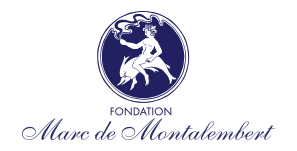The Foundation
The Foundation Marc de Montalembert strives to promote cultural understanding in the Mediterranean world.
It awards annual grants for the realization of cultural projects or related to craft development which enable to discover the diversity of Mediterranean cultures.
In association with l’Ecole du Louvre, Paris, it awards annually the Marc de Montalembert Prize for an advanced research in history of arts in the Mediterranean.
Grants and Prize are awarded to young people from Mediterranean countries.
The Foundation is the host at its seat in Rhodes, Greece, of encounters and seminars on cultural subjects relevant to the region.
The Foundation also takes in residence artists or scholars.
Our activities
Objectives
The Foundation, established in memory of Marc, 1972-1993, has three main projects :
- to conserve the garden and summerhouse which it restored in the medieval town of Rhodes, in Greece and manage their use for cultural activities related to the Mediterranean region;
- to encourage among young people from the Mediterranean the discovery and study of the cultures of the region through annual grants (7000€) and Prize (9000€);
- to facilitate the dialogue between men and women from diverse Mediterranean cultures : it offers its seat in Rhodes as a meeting place for encounters where experiences can be shared and ideas debated in a quest for mutual understanding.
The Garden in Rhodes
“Marc’s garden” is a special garden, a garden of memory and hope, a symbol of renaissance. Tucked away between the walls of the old town of Rhodes, the garden restored by the Foundation extends from the Byzantine chapel of St Mark to the Monastery of St George. Early sources indicate that the garden already existed in the 13th century and through the epoch of the Knights as testified by Caoursin’s miniatures of 1484 and through the Ottoman period.
Today’s garden draws its inspiration from byzantine, mediaeval and Ottoman gardens with geometrical forms, aromatic plants, and the symbolic presence of water. Two tall cypresses stand like candelabra beside the fountain; the presence of fine white-berried myrtles besides the chapel of St Mark bears witness to the age-old sacred nature of the site.




